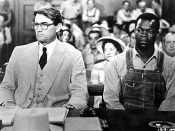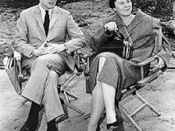Treated Like Dirt Prejudice caused endless pain and suffering for many people since the beginning of civilization. Slavery and the Holocaust are among the many examples of prejudice throughout history. In the early 1900's, Racism was an accepted attitude in the Southern United States; consequently, many lives were hurt, and even lost. Harper Lee's novel, To Kill a Mockingbird, based in the Southern United States, was filled with many examples of prejudice. The town of Maycomb consisted of three outstanding social groups that affected the prejudice in the town: the colored people were scapegoats treated with prejudice; the racist majority looked down on the other groups; and the anti-prejudice group strove to keep the peace.
The colored people were treated with prejudice because of their racial diversity in the small predominantly white town of Maycomb. "Niggers," as the blacks were called, were looked upon as inferior beings and no matter their class, were always considered to be at the very bottom of the social scale.
Aunt Alexandra treated Calpurnia with prejudice because in her eyes, Calpurnia was not a good enough role model for Scout (p.136). Aunt Alexandra did not look for the personality of Calpurnia or the positive influence that she had on the children when making her assumption; instead, all Aunt Alexandra saw was the dark color of Calpurnia's skin.
Another example of prejudice towards Calpurnia was when she walked up to the front door of a house, which was not permitted for a colored person to do, and Scout said "She's supposed to go around in back," (p.94). Calpurnia did not even hear the comment so she was not insulted, but it just goes to show the prejudice thinking that innocent people can have in Maycomb without even knowing it.
The verdict of the Tom...


